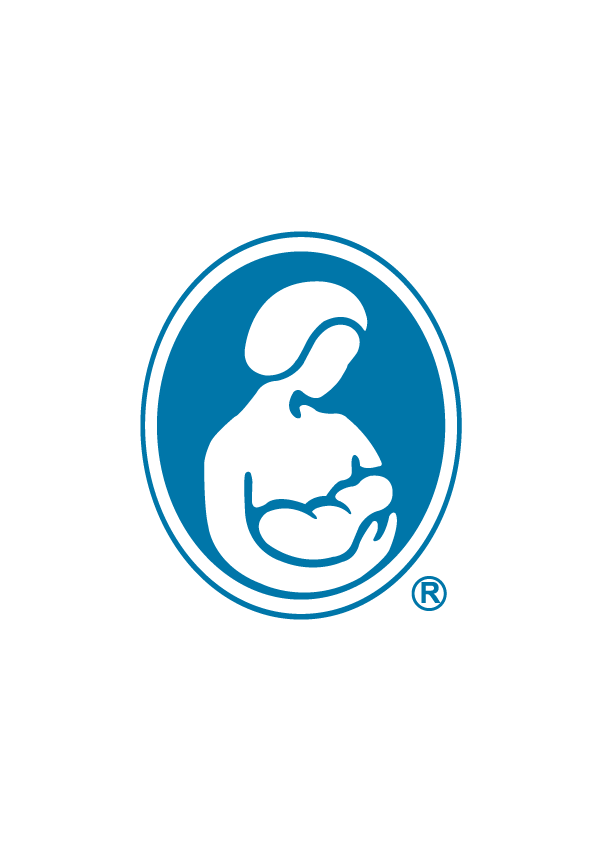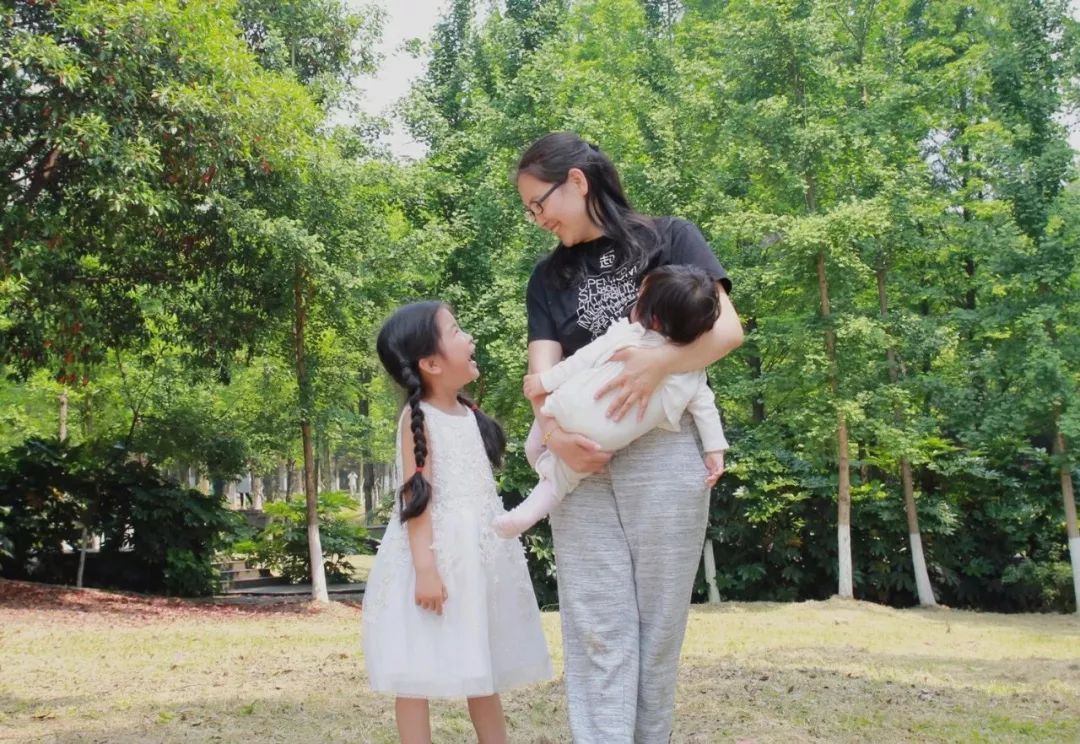博客
-
国际母乳喂养行动联盟在世界艾滋病日的声明 —— 为预防艾滋病出一份力
免责声明:
以下的哺乳资源和链接不是源自或不代表国际母乳会,不过对您可能有用。
Translated by Xiao Bo and Lu Lu
Reviewed by Missy Wang (WABA Endorsement Person, LLLI Leader)
Daisy (LLLI Leader)WABA celebrates World AIDS Day on 1 December. We join the “Hands Up Campaign”1 to support early testing, diagnosis and treatment of all people living with HIV (Human Immunodeficiency Virus) in order to maximise prevention of both horizontal and vertical transmission of HIV which can lead to the Acquired Immunodeficiency Syndrome (AIDS).
国际母乳喂养行动联盟(WABA))庆祝12月1日的世界艾滋病日。我们参加了“举手行动”来支持艾滋病病毒(HIV)携带者的早期测试、诊断和治疗,以最大限度地预防艾滋病病毒的水平或垂直传播。艾滋病病毒可导致获得性免疫缺陷综合征(AIDS)。Approximately 1.9 million adults worldwide have become infected with HIV every year for at least the past five years2. HIV affects mainly sexually active adults. A woman can be horizontally infected by her male sexual partner and then her babies and children can be vertically infected during pregnancy, during birth, or through breastfeeding.
在过去的五年里,全世界每年至少有约190万成年人感染艾滋病病毒。艾滋病病毒主要影响那些有活跃性行为的成年人。女性可被她的男性性伴侣横向感染,然后她的婴儿和孩子可以在孕期、分娩或母乳喂养时被纵向感染。Mothers living with HIV who adhere to their medications are recommended to breastfeed their babies exclusively for the first six months of life, followed by continued breastfeeding with appropriate complementary foods for up to two years or beyond3,4. Mixed feeding (combining breastfeeding with other foods and liquids) before six months of age has been shown to increase the risk of transmission through breastfeeding5,6. Replacement or formula-feeding increases the risk of mortality from infectious diseases and malnutrition7.
推荐携带艾滋病病毒的母亲在服用药物期间纯母乳喂养婴儿到六个月,然后继续母乳喂养并搭配适当辅食,直到婴儿两岁或者更久。在婴儿六个月大之前采用混合喂养方式(在母乳喂养的同时添加其他食物和液体),会使通过母乳喂养传播艾滋病病毒的风险有所增加。母乳替代品或配方奶喂养增加了因传染性疾病和营养不良而导致婴儿死亡的风险。With increased coverage and improved medication regimens, rates of HIV transmission from mothers to infants have dramatically decreased. Since 1995, provision of anti-retroviral therapy (ART) to women living with HIV has prevented an estimated 1.6 million new paediatric HIV infections which would have been acquired through pregnancy, birth and breastfeeding. Well over a million infections (1.3 million) were prevented between 2010 and 2015. The largest decline was in the areas of the world previously worst affected, namely in eastern and southern Africa, where infections in infants fell three-fold, from 18% of infants in 2010 to 6% in 2015. By 2015, 91% of the 1.1 million women receiving antiretroviral medicines to prevent mother-to-child transmission were on lifelong antiretroviral therapy.
随着药物治疗方案的改善和推广,艾滋病病毒在母婴之间的传播率显著降低。 1995年以来,向携带艾滋病病毒妇女提供的抗逆转录病毒疗法(ART)有效预防了约160万例新生儿艾滋病病毒感染——他们原本可能在母亲怀孕、分娩或母乳喂养中被感染。2010年至2015年间,远超过100万(约130万)例感染得到预防。感染率下降幅度最大的区域是世界上曾经受影响最严重的地区,即非洲的东部和南部,在那里婴儿的感染率下降了三倍,从2010年的18%下降至2015年的6%。至2015年,为了防止艾滋病病毒的母婴传播,有110万妇女接受了抗逆转录病毒药物治疗,其中91%在接受终身抗逆转录病毒治疗。Building on these findings, current global HIV and infant feeding policy has been designed to maximise HIV-free survival of infants and their mothers through routine early testing and prompt provision of ART. Pregnant women should have access to testing in early pregnancy and re-testing during late pregnancy and in the early postpartum period.5HIV-exposed infants should receive early and repeat testing at birth, 6, 10 and 14 weeks8. Current research shows conclusively that careful adherence to maternal ART regimens during pregnancy and breastfeeding greatly reduces vertical transmission of HIV; and that exclusive and continued breastfeeding significantly improves overall HIV-free survival of babies3, 4. It is now recommended that mothers living with HIV should receive lifelong ART which not only protects their own health and permits them to enjoy a normal life-span, but also suppresses viral levels in their blood, and in their breastmilk, to undetectable levels9.
基于这些发现,现阶段的全球艾滋病病毒与婴儿喂养政策要求通过做好母亲常规的早期检测和及时提供抗逆转录病毒治疗,让新生儿免受艾滋病病毒感染的可能性最大化。妇女怀孕后,应在其孕早期提供检测,并在其孕晚期和产后早期重新检测。曾暴露在艾滋病病毒下的婴儿应分别在出生、6周、10周和14周时接受早期及重复的检测。近期研究显示,在孕期和哺乳期间严格执行抗逆转录病毒药物方案的母亲,其艾滋病病毒的纵向传播显著降低;纯母乳喂养和持续母乳喂养显著提高了未受艾滋病病毒感染婴儿的存活率。推荐携带艾滋病病毒的母亲接受终生抗逆转录病毒治疗,这不仅可以保护她们自身的健康,使她们能享有平均寿命,还可以抑制她们血液及乳汁中的病毒水平至低于可检测出的程度。WABA joins the Hands Up Campaign to support these life-saving initiatives. If the AIDS epidemic is to be ended by 2030, prevention efforts must be reinvigorated. With sufficient political will, further increases in child survival are within reach. In particular, all pregnant and breastfeeding women diagnosed with HIV, should be initiated on lifelong ART. Breastfeeding should be protected, promoted and supported for HIV-exposed babies. Furthermore the duration of breastfeeding should not be restricted. Improving women’s health so that they can continue to be vital and productive members of society, as well as care for their children adequately, is of crucial importance9.
国际母乳喂养行动联盟加入了“举手行动”来支持这些拯救生命的行动。如果想要在2030年之前终结艾滋病的流行,预防工作必须更加卓有成效。有了政治上的充分支持,未来儿童存活率的提高指日可待。特别应指出的是,所有在孕期和哺乳期被诊断出携带有艾滋病病毒的妇女,都应该接受终生的抗逆转录病毒治疗。对曾暴露在艾滋病病毒下的婴儿,其母乳喂养应得到保护、促进与支持。此外,不应限制对这些婴儿的母乳喂养期限。改善携带艾滋病病毒女性的健康至关重要,这样她们就能继续成为社会中有活力、有生产力的成员,同时也为她们的孩子提供更好的照顾。Let’s all join hands to protect, promote and support breastfeeding for the best health outcomes for women living with HIV and their babies!!
让我们都来加入“举手行动”,保护、促进和支持母乳喂养,使携带艾滋病病毒的女性和她们的宝宝能拥有最佳的健康状况!
For more information about please see: What women need to know about breastfeeding in the HIV context.
希望了解更多信息,请阅读:《在有艾滋病病毒的环境中母乳喂养,女性应知道什么?》References 参考文献:
1. UNAIDS Hands Up Campaign
2. UNAIDS 2016, Prevention Gap report
3. WHO. Guidelines on HIV and infant feeding 2010 – Principles and recommendations for infant feeding in the context of HIV and a summary of evidence. Geneva, World Health Organization, 2010.
4. WHO-UNICEF 2016, Guideline: Updates on HIV and Infant Feeding
5. Coutsoudis A, Pillay K, Spooner E, Kuhn L, Coovadia HM. Influence of infant-feeding patterns on early mother-to-child transmission of HIV-1 in Durban, South Africa: a prospective cohort study. South African Vitamin A Study Group. Lancet. 1999 Aug 7;354(9177):471-6.
6. Coutsoudis A, Pillay K, Kuhn L, Spooner E, Tsai W-Y, Coovadia HM for the South African Vitamin A Study Group. Method of feeding and transmission of HIV-1 from mothers to children by 15 months of age: prospective cohort study from Durban, South Africa. AIDS 2001;15:379-387
7. Coutsoudis A, Coovadia HM & Wilfert CM, HIV, infant feeding and more perils for poor people: new WHO guidelines encourage review of formula milk policies, Bulletin of the World Health Organization 2008;86:210–214.
8. Sherman G G. HIV testing during the neonatal period. Southern African Journal of HIV Medicine. 2015.
9. WHO 2016, Consolidated guidelines on the use of antiretroviral drugs for treating and preventing HIV infection: recommendations for a public health approach – 2nd ed. ISBN 978 92 4 154968 4
10. Understanding International Policy on HIV and Breastfeeding: a comprehensive resource -
在有艾滋病病毒的环境中母乳喂养,女性应知道什么?
免责声明:
以下的哺乳资源和链接不是源自或不代表国际母乳会,不过对您可能有用。
What women need to know about breastfeeding in the HIV context
在有艾滋病病毒的环境中母乳喂养,女性应知道什么?翻译:盛菲菲
审稿:Missy、DaisyThis pamphlet is written for women living with HIV who want to explore the possibility of breastfeeding their babies. The information set out below is not intended to replace medical advice that you may have received from your doctors and HIV clinicians. Please discuss the information in this leaflet with your healthcare providers so that, together, you can make an informed decision about how to feed your baby that will best fit your own individual circumstances.
本文是为携带艾滋病病毒但仍想母乳喂养她们宝宝的母亲而写的。本文提到的信息不能取代您从医生和艾滋病毒临床医生处或已获得的专业医疗建议。 请和您的医生或者健康顾问一起讨论,以便您根据所获信息做出如何喂养宝宝与您个人情况最适合的知情决定。
Breastfeeding is one of the foundations of child health, development and survival, especially where diarrhoea, pneumonia and undernutrition are common causes of illness or death among children under five years of age. The World Health Organization and UNICEF recommend that babies should:
母乳喂养是儿童健康、发育和生存的重要基础之一,尤其是在常因腹泻,肺炎和营养不良导致五岁以下儿童患病或死亡的地区。世界卫生组织和联合国儿童基金会建议,婴儿应:
• Begin breastfeeding within the first hour after the birth;
• Receive no food or drink other than breast milk (exclusive breastfeeding) for the first six months;
• Continue breastfeeding after six months for two years or more, while also receiving other foods and drinks that are suitable for their age.
•在出生后一小时内开始哺乳;
•头六个月内不接受除母乳以外的食物或饮品(纯母乳喂养);
•六个月后继续哺乳两年或更长时间,同时接受适合其年龄阶段的其他食物和饮品。
HIV, (the Human Immunodeficiency Virus), which leads to AIDS, (the Acquired Immunodeficiency Syndrome), can be acquired from a sexual partner. HIV can then be transmitted to a baby before, during or after birth, including through breastfeeding. While it may seem that the risk might be reduced by not breastfeeding, the health risks of artificial feeding may be even more serious for your baby.从性伴侣那获得的HIV(人类免疫缺陷病毒)会导致艾滋病(AIDS,获得性免疫缺陷综合征)。HIV会在孕期、分娩时或分娩后传播给婴儿,也包括通过母乳喂养传播。对于您的宝宝来说,虽然不母乳喂养似乎能降低他们感染艾滋病病毒的风险,但是人工喂养的健康风险可能更严重。
Breastfeeding is very important to the health of the babies of HIV-positive women since babies who are not breastfed experience higher rates of illness, malnutrition and death due to infections such as pneumonia, diarrhoea or sepsis. Research also shows that exclusive breastfeeding greatly reduces the risk of the baby acquiring HIV, even if women are unable to access Antiretroviral Therapy (ART), although this is not ideal. Breastfeeding benefits women too; it can prevent breast cancer, increase the time between the birth of babies, and reduces a woman’s risk of diabetes, ovarian cancer and heart disease.
对于HIV阳性妇女的宝宝来说,母乳喂养对宝宝的健康非常重要,因为没有母乳喂养的宝宝由于肺炎、腹泻或败血症等感染而生病,营养不良或死亡的可能性更高。 研究还表明,即便是母亲无法接受抗逆转录病毒疗法(ART)的非最理想的情况下,纯母乳喂养也大大降低了婴儿感染艾滋病毒的风险。 母乳喂养对女性也有好处,它可以预防乳腺癌,延长下次怀孕生产的时间,并降低女性糖尿病,、卵巢癌和心脏病的风险。
ROUTES OF TRANSMISSION OF HIV
Horizontal infection
The commonest source of infection is through unprotected sex with an HIV-infected partner who is not taking antiretroviral therapy.艾滋病毒传播路线
横向感染
最常见的感染源是通过与未进行抗逆转录病毒治疗的艾滋病毒携带者伴侣的无保护性行为。Blood-borne infection
Individuals can also be infected by receiving a contaminated blood transfusion, or by being injected or cut by contaminated needles, syringes or knives.
输血感染
个别人也会通过输入或注射被污染的血液,或被污染的针头、注射器、刀割伤而感染艾滋病。Vertical infection
If a mother is infected with HIV, her baby can be infected during pregnancy, birth or breastfeeding.
垂直感染
如果母亲感染了艾滋病毒,她的婴儿可能在怀孕,出生或哺乳期间感染。KEY PRINCIPLES RELATING TO HIV AND INFANT FEEDING:
1. Women living with HIV who are not taking ART:
• A woman who is already infected with HIV can transmit the virus to her child during pregnancy, labour or delivery, or through breastfeeding. The risk of transmission to the baby is very much higher during pregnancy and especially during labour and birth, and much lower during breastfeeding.
• A woman who becomes newly infected with HIV during pregnancy or during breastfeeding has a very much higher risk (one in three) of passing the virus to her baby.
• When ART is not available, breastfeeding still provides HIV-exposed infants with a greater chance of survival. You should be counselled to exclusively breastfeed your baby for the first six months of life and continue breastfeeding after that time unless your circumstances are safe for and supportive of formula-feeding.关于艾滋病和婴儿喂养的关键原则:
1. 对感染艾滋病毒,没有接受抗逆转录病毒疗法的女性:
• 已经感染艾滋病毒的女性可以在怀孕,分娩或生产期间或通过母乳喂养将病毒传播给她的孩子。 在怀孕期间,特别是在分娩和生产期间将艾滋病病毒传播给婴儿的风险非常高,而通过母乳喂养传播的风险则低得多。
• 在怀孕期间或母乳喂养期间新感染艾滋病毒的妇女将病毒传染给她的婴儿的风险非常高(三分之一的比例)。
• 当不能接受抗逆转录病毒疗法时,母乳喂养仍然为艾滋病毒暴露的婴儿提供更大的生存机会。 医生应该建议您宝宝的前六个月完全母乳喂养,并在此之后继续母乳喂养,除非您所处的环境喂配方奶是安全的,并可以在配方奶粉喂养方面获得支持。2. Women living with HIV who are taking ART
• Women who suspect they may have been infected with HIV should receive an HIV test as soon as possible.
• Women who test HIV-Positive should receive ART for life.
• It is especially important for pregnant women who test HIV-Positive for the first time in early pregnancy to be started on ART straight away.
• You should be very careful to take your medication exactly as the doctor recommends and to take it regularly every day at the same time, without missing any doses (this is called ART-adherence)
• If you receive ART for at least 13 weeks and if you are adherent to your ART, then the risk of transmission of HIV to your baby is very low, as follows:
Ø Pregnancy, labour and delivery – 0.1%
Ø Exclusive breastfeeding, 0-6 months 0.3 – 0.8%
Ø Mixed breastfeeding with weaning foods 6-24 months, 1 – 1.1%2、对感染了艾滋病毒感染并接受抗逆转录病毒疗法的女性:
• 怀疑感染了艾滋病毒的女性应尽快接受艾滋病毒检测。
• 检测为HIV阳性的女性应终生接受抗逆转录病毒疗法。
• 对于在怀孕早期首次检测为HIV阳性的怀孕女性来说特别重要的是,应立即开始接受抗逆转录病毒疗法。
• 您应该非常小心地按照医生的建议服用药物,并且每天定时服用药物,不减少任何剂量(这称为ART依从性)
• 如果您接受接受抗逆转录病毒疗法至少13周,你对抗逆转录病毒疗法的依从性很好,那么艾滋病毒传播给您的宝宝的风险非常低,如下:
ü 怀孕,分娩和生产 0.1%
ü 纯母乳喂养,0-6个月 0.3 – 0.8%
ü 混合母乳喂养与加辅食 6-24个月,1 – 1.1%3. Women who are HIV uninfected or whose HIV status is unknown
Pregnant women or new mothers whose status is unknown should be offered HIV testing –
• If you test HIV-negative during early pregnancy, you should be offered another test during the last three months and again shortly after your baby is born.
• If you are living in a setting with high HIV prevalence, you, your partner and baby may be re-tested often (as per your doctor’s advice).3.未感染艾滋病毒的女性或艾滋病毒感染状况未知的女性
应向艾滋病毒感染状况未知的孕妇或新妈妈提供艾滋病毒检测 –
• 如果您在早孕期测试HIV阴性,您应该在孕期的最后三个月内再次接受测试,并在宝宝出生后不久再次接受测试。
• 如果您生活在艾滋病毒感染率高的环境中,您,您的伴侣和婴儿应经常重复检查(根据医生的建议)。4. HIV-exposed babies
• Babies of HIV-infected women should receive antiretroviral prophylaxis for 4 – 6 weeks after birth.
• Babies should be tested for HIV shortly after birth and at 6, 10 and 14 weeks.
• Babies who test HIV-positive should commence ART immediately.4.暴露在艾滋病毒下的婴儿
• 艾滋病毒感染妇女的婴儿应在出生后4至6周接受抗逆转录病毒预防。
• 婴儿在出生后不久、第6、10和14周应进行艾滋病毒检测。
• 测试结果为HIV阳性的婴儿应立即开始抗逆转录病毒疗法。WOMEN’S NUTRITIONAL NEEDS
• Making milk increases your nutritional requirements by 300-500 Kcal per day. To support breastfeeding and keep healthy, breastfeeding women (whether infected or not) should consume the equivalent of about one extra meal per day.
• Getting enough to eat helps maintain your ability to fight infections, keep up your energy levels and is essential for improving treatment outcomes with antiretroviral drugs.
• Your nutritional status before or during pregnancy and during breastfeeding influences both your health, and the health and survival of your baby.
• After birth, it is necessary for you to receive enough food to support the demands of breastfeeding and to keep up your own nutrition.
• HIV infection increases energy requirements due to higher resting energy expenditures and increased nutritional needs from HIV-related infections and illnesses.
• If you have poor appetite, you should be encouraged to eat well. Ensure that food is available, appetising and nutritious.妈妈们的营养需求
• 为了制造乳汁,每天需要增加300-500千卡的营养需求。为了母乳喂养和保持健康,母乳喂养的女性(无论是否感染艾滋病)应该每天增加一次额外的用餐量。
• 足够的食物有助于保持你的抗病毒能力,保持你的能量水平,对于提高抗逆转录病毒药物的成效至关重要。
• 您在怀孕和哺乳期间的营养状况影响您的健康,以及您宝宝的健康与生存。
• 宝宝出生后,您必须获得足够的食物,以满足母乳喂养的需求,以及保持自己的营养。
• 艾滋病毒感染增加了精力上需求,因为艾滋病相关感染和疾病会需要更多的精力支出和营养需求。
• 如果你的胃口不好,也要吃得好些。确保食物可获取、开胃和营养。RECOMMENDATIONS FOR WOMEN LIVING WIH HIV:
1. You should receive lifelong ART and prevention interventions to reduce HIV transmission.
• Every effort should be made to stress that women living with HIV should receive and keep taking ART, not only to prevent transmission of the virus to their babies, but also for their own health and well-being. This will enable them to live a normal lifespan with fewer opportunistic infections, and to take care of all their children.
2. Duration of breastfeeding by women living with HIV if she is receiving ART
• When you are able to continue breastfeeding for 24 months or beyond, your baby is likely to suffer fewer infections, especially where diarrhoea and pneumonia are significant causes of infant and child mortality.
• You and your baby will also enjoy other benefits of longer breastfeeding duration such as improved child development and lower risk of breast and ovarian cancer.
给感染艾滋病毒女性的建议:
1.您应该接受终身抗逆转录病毒治疗和干预,以减少艾滋病毒的传播。
再次强调,感染艾滋病毒的女性应该接受并持续接受抗逆转录病毒治疗,这不仅是为了防止病毒传染给婴儿,也是为了她们自身的健康和幸福。这将使他们能够减少感染机会,享有正常的寿命,并照顾他们的孩子。
2. 接受抗逆转录病毒治疗的艾滋病毒感染者的母乳喂养持续时间
l 当您能够持续母乳喂养24个月或更长时间时,您的宝宝可能会感染较少,特别是当腹泻和肺炎是导致婴儿和儿童死亡的主要原因。
l 您和您的宝宝享受更长的母乳喂养也会有其他好处,如改善儿童发育情况和降低乳腺癌和卵巢癌的风险。3. When women decide to stop breastfeeding
• Breastfeeding should only stop when you are able to provide your baby with sufficient safe food without breastmilk. Stopping breastfeeding completely should be done gradually, and should take approximately one month. Always seek the help of a professional when considering stopping breastfeeding.
4. If your baby tests HIV-Positive
• If babies and young children are found to be HIV-Positive, women are strongly encouraged to protect their health and survival by exclusively breastfeeding for the first six months of life and continuing to breastfeed in accordance with the recommendations for the general population: that is, up to two years or beyond.
5. Your need for counselling
• Counselling is a helping relationship specific to the needs of the individual and her family. Most women benefit from a respectful, empathetic discussion of their situation. It is especially helpful if you and your partner receive counselling together as a couple, or with other key family members. Also, it is important for you to have access to family planning to prevent unintended pregnancy.3.当妈妈决定停止母乳喂养
母乳喂养只有在您能够为宝宝提供除母乳外足够安全的食物时才能停止。完全停止母乳喂养应该循序渐进,需要大约一个月。考虑停止母乳喂养,应寻求专业人员的帮助。
4.如果你的宝宝检测出艾滋病毒阳性
如果发现婴儿和儿童是艾滋病毒阳性,强烈建议妈妈在宝宝六个月前纯母乳喂养,以保护他们的健康和生命,之后与一般人群相同,即继续母乳喂养至孩子两岁或以上。
5.寻求辅导
单独的咨询辅导可以帮助妈妈和她的家庭解决个性化的家庭问题。大多数妈妈从受尊重的、共情的讨论中受益。如果您和您的伴侣或其他关键家庭成员一起接受辅导,会更加有效。此外,能自主制定家庭生育的计划,以防止意外怀孕也很重要。NOTES/ADDITIONAL INFORMATION:
The risk of replacement feeding and mixed feeding:
• Intentionally replacing breast milk with another kind of milk, usually formula-milk is known as replacement feeding.
• Replacement feeding poses a greater risk of death and disease if there is a lack of sanitation, clean water and lack of health care, than transmission of HIV through breastfeeding.
• In resource-poor settings, the use of infant formula may interfere significantly in the monthly expenditure of the family. Almost half of the family budget can be wasted buying infant formula, fuel, water and expenditure due to medications and medical consultations/hospital fees, as the non-breastfed baby suffers a greater number of infections.
• Feeding a baby with breast milk as well as other foods and / or liquids before the age of 6 months is known as mixed feeding. Mixed feeding before six months after birth can increase the risk of postnatal HIV transmission compared to exclusive breastfeeding, and therefore should be avoided as the worst option.
• Reversing the decision from formula-feeding to breastfeeding is difficult.
注意事项/附加信息:
替代喂养和混合喂养的风险:
l 有意地用另一种奶替代母乳,通常奶粉喂养被称为替代喂养。
l 如果缺乏卫生设施,清洁的水和健康保健,相对于母乳喂养传播艾滋病毒,替代喂养会造成更大的死亡和疾病风险。
l 在资源贫乏的环境中,婴儿配方奶粉可能会明显影响家庭的每月支出。由于非母乳喂养的婴儿有更多的疾病感染风险,几乎一半的家庭预算可能被用在购买婴儿配方奶粉、燃料、水和相关的医疗费用支出上。
l 在宝宝前6个月同时母乳喂养和其他食物/或液体喂养被称为混合喂养。与纯母乳喂养相比,出生后6个月的混合喂养可能增加产后艾滋病毒传播的风险,因此应该避免选择这个最坏的选择。
l 奶粉喂养转换为母乳喂养是困难的。If you need any additional information on
(i) what to feed infants when you stop breastfeeding,
(ii) conditions needed to safely formula feed and
(iii) heat-treated, expressed breast milk,
please discuss your feeding plans with a skilled health professional, your HIV clinician, lactation consultant or peer counselling group.如果您在以下方面需要其他信息:
(i)当你停止母乳喂养时,应该喂婴儿什么食物,
(ii)奶粉喂养需要的安全条件
(iii)如何加热挤出的母乳
请与专业的医疗人员、您的艾滋病临床医生、哺乳顾问或志愿互助咨询小组讨论您的喂养计划。More information can be found in the following documents which are available on the internet:
更多信息可以在互联网上的以下文件中找到:
• WHO 2016, Guidelines on infant and young child feeding Fact Sheet, fs342
• WHO Guidelines: Updates on HIV and Infant Feeding (2016) http://www.who.int/maternal_child_adolescent/documents/hiv-infant-feeding-2016/en/
• Understanding International Policy on HIV and Breastfeeding: a comprehensive resource
• Duration of ART to achieve undetectable viral load: Chibwesha CJ, Giganti MJ, Putta N, Chintu N, Mulindwa J, Dorton BJ, Chi BH, Stringer JS, Stringer EM. Optimal Time on HAART for Prevention of Mother-to-Child Transmission of HIV. J Acquir Immune Defic Syndr. 2011 Oct 1; 58(2):224-8. doi: 10.1097/QAI.0b013e318229147e, http://www.ncbi.nlm.nih.gov/pubmed/21709566
• Townsend CL, Cortina-Borja M, Peckham CS, de Ruiter A, Lyall H, Tookey PA. Low rates of mother-to-child transmission of HIV following effective pregnancy interventions in the United Kingdom and Ireland, 2000-2006. AIDS. 2008 May 11;22(8):973-81.
• Morrison P, Greiner T, Israel-Ballard K, Informed choice in infant feeding decisions can be supported for HIV-infected women even in industrialized countries, AIDS 2011, 25:18071811 e-pub ahead of print AIDS, 1 August 2011, final version 24 September 2011, PMID: 21811145 [PubMed – as supplied by publisher] http://www.ncbi.nlm.nih.gov/pubmed/21811145
• Silverman MS. Interim Results of HIV Transmission Rates Using a Lopinavir/ritonavir based regimen and the New WHO Breast Feeding Guidelines for PMTCT of HIV. Abstract H1-1153, International Congress of Antimicrobial Agents and Chemotherapy (ICAAC), Chicago IL, 2011
• Ngoma M et al, Efficacy of WHO recommendation for continued breastfeeding and maternal cART for prevention of perinatal and postnatal HIV transmission in Zambia, J Int AIDS Soc 2015 http://www.ncbi.nlm.nih.gov/pmc/articles/PMC4490793/pdf/JIAS-18-19352.pdf
• Gartland MG, Chintu NT, Li MS et al. Field effectiveness of combination antiretroviral prophylaxis for the prevention of mother-to-child HIV transmission in rural Zambia. AIDS, 2013, 27(8). doi:10.1097/QAD.0b013e32835e3937. -
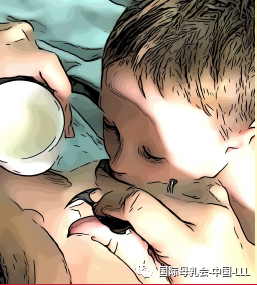
滴落喂养 DRIP-DROP FEEDING
更接近母乳喂养的方法
Method For Moving Towards Breastfeeding
也许你还没有开始母乳喂养,或你比原计划更早地停止母乳喂养。现在你想寻求再度泌乳或者诱导泌乳的支持。 Maybe you didn’t start breastfeeding or stopped earlier than you wanted to: reach out for support in relactation/induced lactation.
滴落喂养法鼓励宝宝在乳房上吸吮。它可以通过刺激乳房和乳头来帮助你生产更多的乳汁,让宝宝从奶瓶喂养更容易地返回到乳房。
Drip-Drop Feeding encourages babies to suckle at the breast. It helps you produce more milk through breast-nipple stimulation and makes moving from bottle to breast easier.
每一滴乳汁都很珍贵,它保护宝宝免于受到致病菌的侵害。母乳喂养可以拯救生命,尤其是在紧急情况下。
Every drop of breastmilk is precious, protecting your baby against germs that can make them sick. Breastfeeding saves lives, especially during emergencies.
Motivation, determination,perseverance and support are vital.
滴落喂食和1-2-3一样简单
AS EASY AS 1-2-3!
#1
用一个干净的杯子装上奶,将一个干净的勺子,和一块干净的布放在手边,以备擦掉任何漏下的奶。妈妈和宝宝放松,保持肌肤接触,用半躺或是直立的姿势都可以,宝宝的肚子贴着妈妈的肚子,宝宝的鼻子对着妈妈的乳头。 In a clean cup, with baby’s milk, have a clean spoon, and clean cloth handy for any dribbles. Relax in skin-to-skin contact, either in laid back or up-right position, with baby positioned “tummy to mummy – nipple to nose”.
#2 拿着有奶的小勺,让奶从乳房上部滴落到乳头。继续保持缓和恒定的流量(如果流速缓慢,婴儿可能会感到沮丧。) Take the spoon with milk and drip so it flows from the top of breast to the nipple. Continue ensuring a gentle constant flow (if flow is slow, baby may get frustrated).
#3 在另一侧乳房上重复以上动作,直到宝宝不想吃了为止。让宝宝尽可能多地呆在妈妈的乳房上,与妈妈肌肤接触,在乳房上吸吮。你还可以用杯子或勺子去喂剩余的奶(见杯喂海报)。避免奶瓶喂养。 Repeat on other breast for as long as baby wants. Allow baby to breastfeed and spend as much time as possible in skin-to-skin contact, suckling on the breasts. You can cup or spoon feed any remaining milk (see Cup Feeding poster). Avoid all bottle-feeding.
母乳喂养的目标是24小时内喂养10-12次,每次20-30分钟(频率越高,持续时间越长越好,在夜间也是如此,并经常换边)。如果宝宝还不能在乳房上吃奶,那就用同样的频率挤奶。学会用手挤奶是一项重要的技能,尤其是在紧急情况下。
For breastfeeding, aim for 10-12 times in 24 hours and 20-30 mins per session (the more frequent and longer the duration the better, with sessions at night and frequently swapping sides). If baby isn’t able to breastfeed yet, express with the same frequency. Learning to hand express is an important skill, particularly during emergencies.
分泌母乳可能需要几天或几周的时间,所以在减少补充喂养之前,确保母乳量在增加是很重要的。请联系哺乳顾问,她可以支持你再度泌乳或者诱导泌乳,并建议你该何时以及如何逐步减少补充喂养,同时密切关注宝宝的体重。
It can take days, or weeks to produce breastmilk, so it’s important the breastmilk supply is increased, before decreasing supplements. Reach out to a Breastfeeding Counsellor, who can support you in relactation/induced lactation, advising when and how much, to gradually reduce supplements, and closely monitor baby’s weight.
-
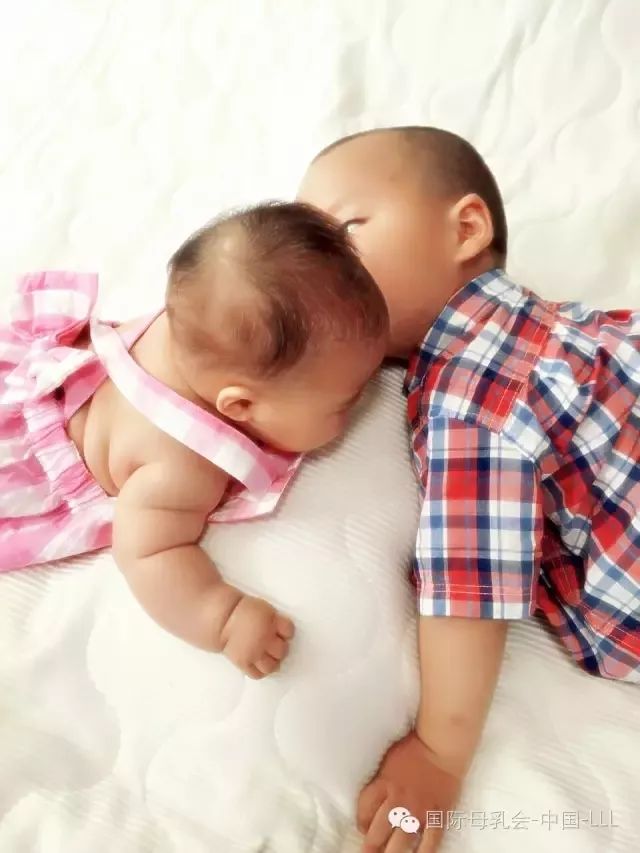
杯喂 CUP FEEDING
不能母乳亲喂的宝宝也可以选择奶瓶喂养以外的方式
A BABY NOT FED AT THE BREAST CAN BE FED WITHOUT A BOTTLE
杯喂从宝宝出生后就可以开始。杯子里可以装挤出来的母乳或婴儿配方奶。你可以用任何干净、表面光滑、敞口的杯子用于杯喂。
Cup feeding can be used from birth. It is suitable for both expressed breastmilk and infant formula. You can use any clean, open cup with a smooth surface.
从单次喂奶的平均时间来看,杯喂与奶瓶喂没有明显的差异。
Cup feeding has no notable difference to bottles for average time per feed.
杯子比奶瓶更安全。奶瓶的奶嘴和瓶盖不易彻底清洁干净,容易滋生细菌,进而导致宝宝生病。用热肥皂水就能简单地把杯子冲洗干净,无需消毒,而奶瓶最好要消毒。
Cups are safer than bottles. Bottle teats and screw tops trap germs that can get into the milk and make babies ill. Cups are easily cleaned with washing in hot soapy water, and do not need sterilising like bottles.
在紧急情况下,请使用一次性杯子。
In emergencies, use disposable cups.
杯喂和1-2-3一样简单!
CUP FEEDING IS AS EASY AS 1-2-3!
先让宝宝用直立姿势坐在你的膝盖上,使他的背部和颈部得到支撑。给小宝宝们杯喂时,最好用一块布包裹住他们的身体,防止他们的手碰倒杯子。
Sit baby upright on your lap and support their back and neck. With small babies it can help to wrap them with a cloth, to keep their hands from knocking the cup.
拿一小杯奶轻轻地放在宝宝的下唇上,然后微微地倾斜杯子,保持奶只到杯口边缘,刚好够到宝宝的嘴唇。宝宝应该处于警觉状态,张开嘴巴和眼睛。
Hold a small cup of milk to rest the rim lightly on baby’s lower lip. Then tilt the cup, keeping the milk at the rim of the cup, just in reach of baby’s lips. Baby should be alert, and open both their mouth and eyes.
动作要慢慢来。不要把奶倒进婴儿的嘴里。每次都让宝宝做主,按照“舔—咽—停”的节奏。让奶保留在杯口。当宝宝吃饱了,他们会闭上嘴巴,不再喝了。
Go Slow. DO NOT POUR the milk into baby’s mouth. Always let baby lead the pace of sips, swallows and pauses. Still keep the milk just at the cup’s rim. When baby is full, they will close their mouth and will not take anymore.
宝宝会吸吮或啜饮奶,或用舌头舔一舔奶,如右图所示。
Babies will suck or sip the milk, or may use their tongues to lap it up like in this picture on the left.
杯喂可以让宝宝自由地移动舌头,这样就更接近在乳房上吃奶时发生的“吸吮”反射。
Cup feeding gives babies freedom to move their tongue in a way that is closer to the ‘suckle’ reflex used for breastfeeding.
-
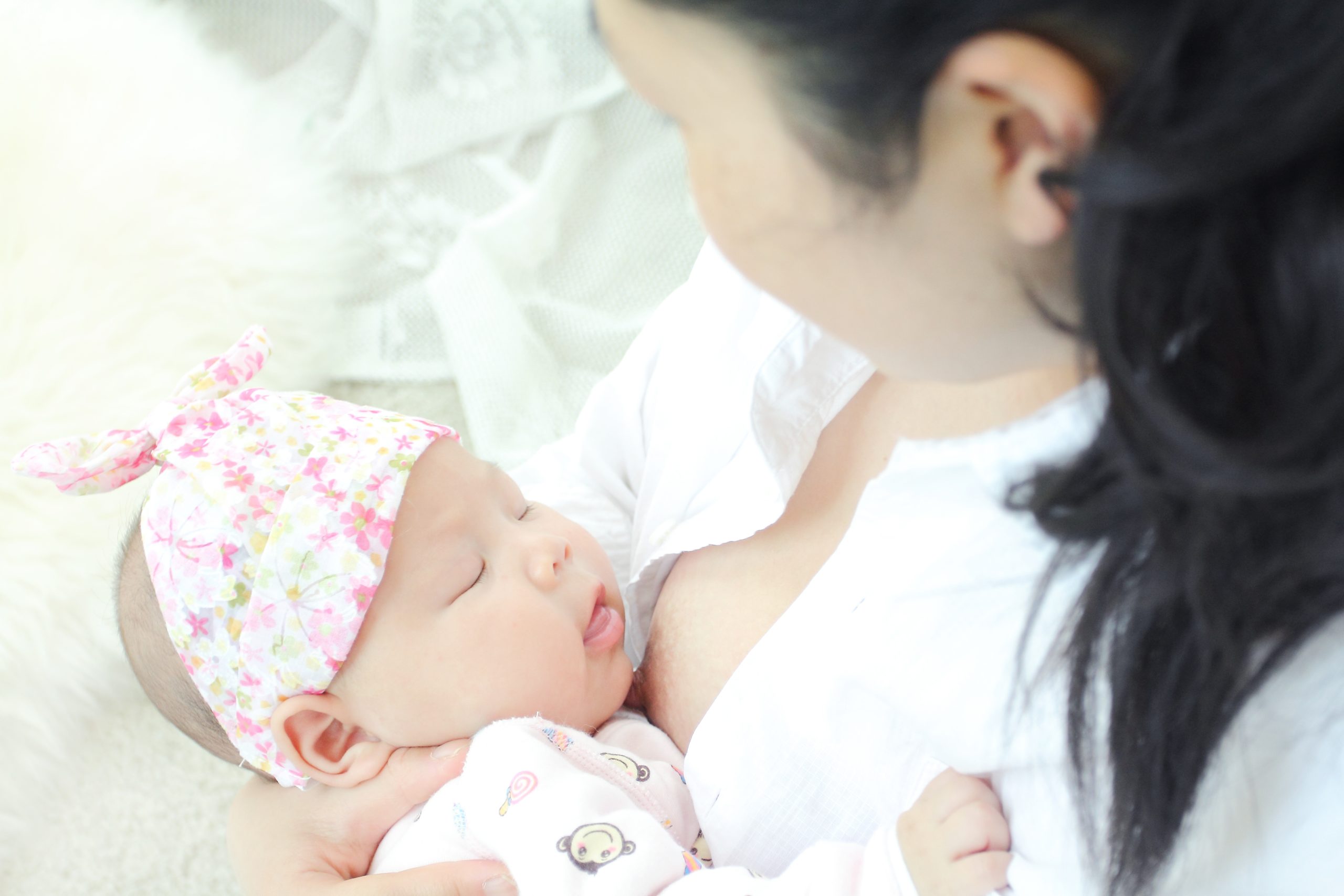
母乳喂养、分娩和 COVID-19(新冠肺炎)
翻译 许悦
审稿 Marien, Victoria
2020年4月16日,美国北卡罗来纳州拉雷市
许多人要求国际母乳会 (LLLI) 提供有关与分娩和母乳喂养有关的冠状病毒的最新信息。我们继续强调母乳喂养所有婴儿的重要性,无论是新生儿还是年龄较大的婴儿,以及是否检测出新冠阳性。当一个家庭做出分娩和婴儿喂养的决定时,了解母乳喂养的好处和不母乳喂养的风险对他们很重要。
母乳喂养是保护婴儿免于生病或在婴儿生病时减轻婴儿疾病严重程度的最佳方法。
国际母乳会支持世界卫生组织 (WHO) 关于出生后立即进行母乳喂养的建议,即使新冠肺炎检测结果呈阳性的情况下也是如此。假如母亲是新冠确诊或密切接触者,母乳喂养对她的婴儿非常重要。尤其关键的是,所有新生儿在出生后一小时内得到母乳喂养支持,这样他们才能从初乳提供的免疫成分中受益。
当母乳妈妈生病了,除非医学上有指证,否则不要中断母乳喂养。当家庭的任何成员被暴露在病毒面前时,婴儿也不例外。中断母乳喂养实际上都可能增加婴儿生病甚至重病的风险。
当母亲生病严重,无法进行母乳喂养时,应该得到手挤奶或吸奶的支持,这样婴儿仍然可以吃到母乳。如果无法做到这一点,WHO建议将捐赠母乳作为下一个最佳喂养选择,因为捐赠母乳将含有母乳代用品中没有的免疫成分。应提供有关重新泌乳的信息,以及提供在健康状况改善时帮助让婴儿回到乳房的支持。
世界卫生组织已为新冠肺炎检测呈阳性的人群发布了与怀孕、分娩和母乳喂养相关的最新信息。该中文版信息可在以下链接找到:
国际母乳会鼓励家庭根据可靠的信息和与知识渊博的专业人士的讨论做出明智的决定。
信息来源将在以下链接中提供:
https://www.llli.org/covid-19-references/
【公众号发布时这里添加上次翻译新冠常见问题FAQ的文章的链接】
一旦有其他新信息,我们将更新相关资源。请经常回来查看内容更新。
Breastfeeding, Childbirth, and COVID-19
16 April 2020, Raleigh, North Carolina, USA
Many people have asked for information updates from La Leche League International (LLLI) regarding coronavirus in relation to childbirth and breastfeeding. We continue to emphasize the critical importance of breastfeeding all babies whether newly born or older and whether someone has tested positive for COVID-19 or not. Being knowledgeable about the benefits of breastfeeding and risks of not breastfeeding is important for families as they make childbirth and infant feeding decisions.
Breastfeeding is the best means of protecting a baby from getting sick or of reducing the severity of a baby’s illness if a baby does become ill.
LLLI supports the World Health Organization (WHO) recommendation for breastfeeding immediately after birth even when a positive COVID-19 test has been obtained. Breastfeeding is important for an infant who is born to anyone who tests positive for COVID-19 or who has a close family member who has tested positive. It is critical that all newborns be supported in breastfeeding within one hour after birth so they can benefit from the immunological components that colostrum provides.
If someone who is breastfeeding becomes ill, it is important not to interrupt breastfeeding unless it becomes medically necessary. When any member of the family has been exposed, the infant has been exposed. Any interruption of breastfeeding may actually increase the infant’s risk of becoming ill and even of becoming severely ill.
Mothers who become too ill to breastfeed should be supported in expressing or pumping so that the baby can still be given the milk. If that is not possible, donor milk is recommended by the WHO as the next best feeding option, as donor milk will contain immunological components not available in human milk substitutes. Information about relactation should be offered, along with support to help get the baby back to the breast when health improves.
The WHO has issued updated information related to pregnancy, delivery, and breastfeeding for anyone who tests positive for COVID-19. That information may be found at:
https://www.who.int/news-room/q-a-detail/q-a-on-covid-19-pregnancy-childbirth-and-breastfeeding
LLLI encourages families to make informed decisions based on reliable information and discussions with knowledgeable professionals.
Sources of information will be provided at the following link:
https://www.llli.org/covid-19-references/
We will update these resources as new information becomes available. Please check back for updates frequently.
-
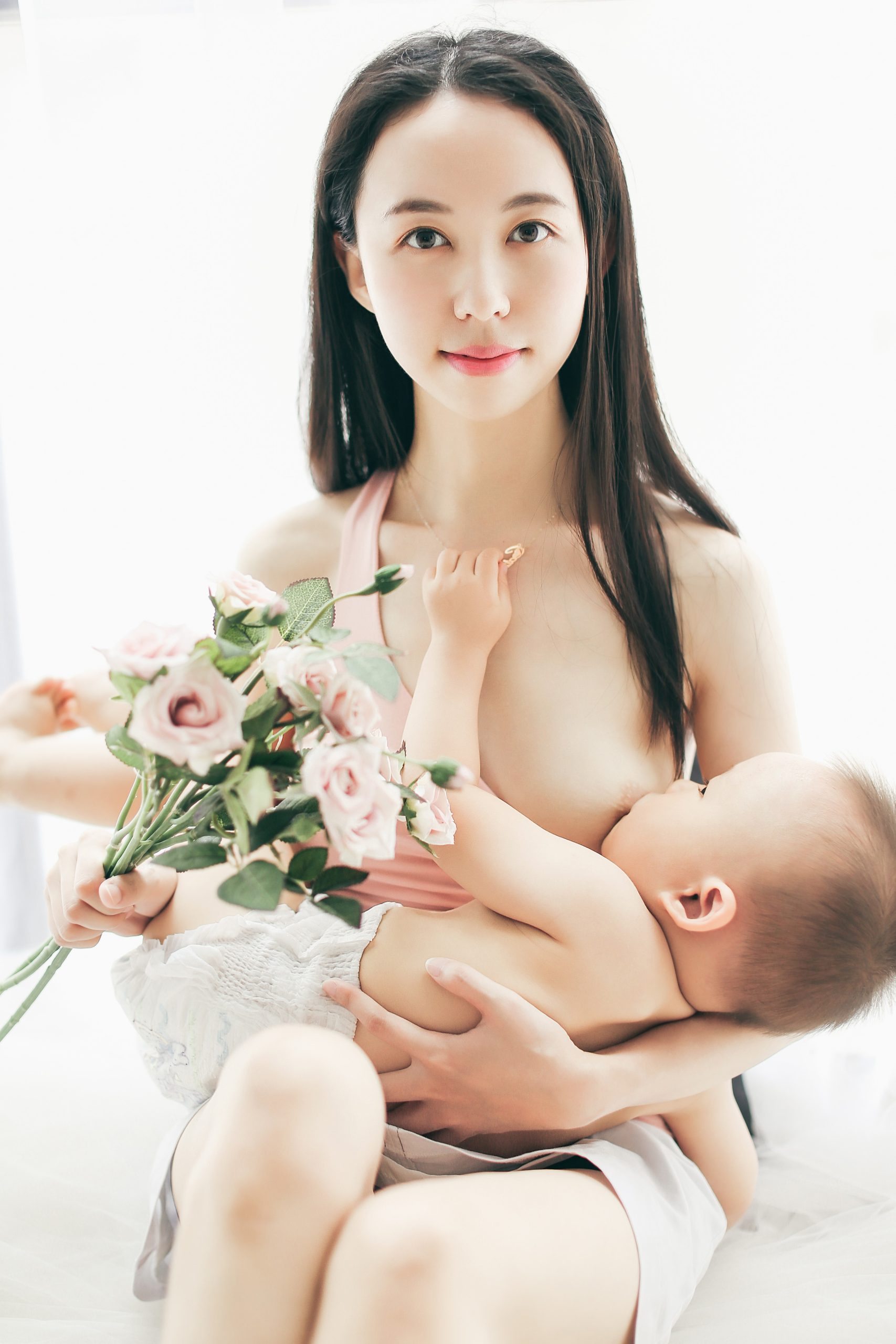
怎样给您的宝宝添加辅食 How to Add Complementary Foods
母乳喂养赋予您的宝宝一个最好的开始。您知道您的乳汁是宝宝最完美的食物,但是现在他已经六个月了,您开始考虑“下一步该做什么呢?”以下一些非常好的理由,促使您推迟到宝宝半岁左右再添加辅食。首先,既然母乳是完美的食物,那么您的健康足月的宝宝在最初几个月不需要任何其他的食物。其次,过早开始添加辅食可能引起过敏反应,因为某些宝宝的消化系统还不能接受除母乳外的其他食物。最后,一旦宝宝减少吮吸母乳,您的乳汁分泌也随之减少。那样的话,不适合宝宝的食物将会用来来替代母乳这种数千年来自然界专门为宝宝设计的最完美的食物。在宝宝的第一年里,您的乳汁应该仍是他的主要营养来源。在我们的上一代,人们鼓励妈妈们愈早开始添加辅食愈好。现代科学研究证实了作为妈妈的我们一直就知道的一个事实。母乳是宝宝最完美的食物,在半岁之后才添加辅食的宝宝是最健康的。美国儿科学会在1997年将他们的建议修改为“在半岁之前,母乳喂养的婴儿通常不需要水、果汁或其他食物。”何时开始添加辅食您可能已经了解到,在哺乳时应该看着宝宝而不是钟。正如宝宝会让您知道他何时饿了、饱了、不想吃奶了,他也将告诉您什么时候他准备好接受辅食。当宝宝准备好开始吃其他食物时,他会给您一些明确的信号。在半岁左右,您的宝宝开始抓东西并往嘴里送。一些宝宝会伸手去抓您正要吃的东西,但这通常只是好奇,而不是已经做好吃辅食的准备。宝宝背部需要发展到如给与扶持便可以坐着,您可能还会注意到他正在长出第一颗牙齿。当宝宝准备好接受辅食时,舌和嘴的肌肉已经发育到可以将食物从舌尖传送到口腔的后部。他们还必须能够协调这种传送与吞咽的动作。宝宝也开始制造更多口水,为消化食物作准备。快到添加辅食的阶段时,一些宝宝显示出更多的哺乳需求。但是,如果宝宝此时还远不到六个月大,这很可能不是添加辅食的信号。这只是“猛长期”母乳需求量的增加,通常在坚持三至五天频繁哺乳后,您的母乳供应便能够相应增加,宝宝的需求也恢复正常。与流传的说法相反,在睡前吃固体食物并不能让宝宝睡一整夜。一些研究项目比较提早添加辅食的宝宝与较晚添加的宝宝。两组中睡整觉的宝宝的数量是一样的。所以如果有人信誓旦旦地告诉您,她的宝宝自从添加辅食后便能睡整觉,那很可能是因为这个宝宝恰好在那个时候开始整夜睡觉了。提早添加辅食可以影响某些妈妈恢复生育机能的时间。减少哺乳的妈妈可能发现她们的经期又开始了。婴儿食品是一个巨大的产业
在我们的曾祖母的年代,添加辅食非常简单。当宝宝能够和家里其他成员一起吃同样的食物时,才开始添加辅食;它们只是简单地制成糊状或切成小块。今天的妈妈们在添加辅食时却可能不知所措。当商家们发现将研磨食物装进小罐子里便可以获利时,婴儿食品就变成一个巨大的产业。妈妈们读到或听到的大部分添加辅食的信息都来自婴儿食品制造商,而他们正在推销自己的产品。一些婴儿食品制造商在他们的广告中建议,辅食应当从宝宝的体重增加至出生体重两倍或达到某一重量时开始。体重不是母乳宝宝开始添加辅食的一个合适的指标。因为母乳宝宝倾向于在初期体重增加很快,往往在半岁之前就增加了一倍。体重与消化辅食的能力之间毫无关系。母乳可以继续提供宝宝所需要的一切营养成份。一家婴儿食品制造商甚至建议,当母乳宝宝在二十四小时内的哺乳需求超过八至十次时就添加辅食。事实上这是任何母乳宝宝正常的哺乳次数,并不表示需要提早添加辅食。妈妈们愈来愈关心宝宝的营养需求,她们也在质疑市售婴儿食品的必要性,因为它们通常含有添加剂、人工合成物、糖、盐及防腐剂。小小几盎司市售婴儿食品的价格比起新鲜果蔬的成本,也相对昂贵。如果您确实想要购买它们,请仔细阅读标签以避免不必要的添加物。如何开始添加辅食
给宝宝添加辅食的尝试其实就是一个学习的过程。您不需要把宝宝的肚子填得满满的。您在第一次时可以仅尝试四分之一匙,然后慢慢加量,当然这要随着宝宝自己的节奏来。请记住,宝宝在极度饥饿时是没有心情尝试任何新事物的。在最初几周,只在哺乳之后尝试辅食。两个最合适的时机是上午及下午的中间的时候,那时您不用担心正在给家人做的饭。一次只尝试一种新食物,并且至少一周后再添加另一种。开始时每次只尝试四分之一匙,一天一到两次,之后每次稍加一点分量。尽管大一点的宝宝不像小宝宝那样容易过敏,但还是有可能的。如果某种食物似乎引起某些反应,比如皮疹、流鼻涕、屁股痛 ,那么先停止这种食物一周,之后再尝试。如果尝试两三次都有相同的反应,在六个月之内不要吃这种食物。记住,游戏本身难免有一点点混乱。添加辅食的整个过程对您的宝宝而言就是一个游戏,因此您应该能够预见到他会和他的食物玩得津津有味。这正是他学习的方式——触摸、揉烂、抓捏、品尝。如果事先做一些准备,您就不会对着脏兮兮的小家伙生气了,清理战场也更容易。在宝宝吃完前,不要不停地擦他的脸,扫他的兴。在宝宝吃饭时,您可以给他围一个大围嘴,或者把衣服(除了尿布)脱掉,吃完后再放他到浴缸里洗洗。为了保护您的地板,您可以在宝宝的高脚椅下铺上旧报纸或浴帘,当然一只饥饿的狗在清理洒落的饭菜时也非常有用。在最初几个星期里,一些妈妈喜欢用搅拌机、食物处理机、或婴儿食物研磨器,这样她们准备的食物看起来就像买来的小罐子里装的东西了。对于在六个月左右开始添加辅食的宝宝,通常不需要这么做。您仅需要将家里大人吃的食物简单地用叉子捣碎并制成泥状就可以了,只要记得是在大人加入盐和胡椒之前必须把宝宝的那一份单分出来。在这儿有一点需要特别注意。大部分宝宝有非常好的干呕反射 (Gag Reflex),将误食的异物呕吐出来。您的宝宝在学习完全靠自己和食物打交道时,您可不希望将他独自留在那里。同样,不要在宝宝躺着时给他磨牙食品,以免卡在喉咙中呛到。成熟的香蕉大部分宝宝喜欢的第一种食物是成熟的香蕉,因为它的口感软滑,方便易得。它比麦片更有营养,也不易引起过敏反应。您可以用叉子捣烂一点香蕉泥,放在宝宝的高脚椅的餐盘上,让他自己吃。如果他似乎需要帮助(并且也不反对),您可以偶尔用汤匙帮他一下,但是不要全面接管这一项“他”的工程。如果他把食物吐出来,或者没有兴趣,那么可能他还没有完全准备好接受辅食,您可以在大约一周后再尝试。一些宝宝要到八九个月大时才开始接受辅食,您没有必要为此担心。只要您的宝宝是健康的,那么直到准备好尝试其他食物之前,他都可以依靠您的母乳茁壮成长。您只需要不时提供一些食物,并且保持愉快的态度。不要因为宝宝拒绝食物而沮丧或发怒。宝宝是一种社交动物,因此他可能希望和家里的其他成员一起吃饭,而不是在另外的时刻单独吃。将他的餐椅放在餐桌旁您的座位旁边,他一定会试着模仿家里其他人的动作,并用您放在他的餐盘里的香蕉泥作试验。如果您的宝宝看起来不喜欢香蕉作为第一种辅食,其他不错的选择是红薯或白薯。整个烘烤可以保存营养,然后捣烂给宝宝吃。另一个选择是鳄梨,它和香蕉一样软滑,甚至含有更多的铁和维生素。您可以切一小片,剩下的部分连外皮及核放在冰箱里冷藏以备下次使用。婴儿米粉您可能会奇怪为什么我们建议从香蕉开始添加辅食,而不是通常的婴儿米粉。婴儿米粉是高精加工食品,如果没有添加铁或其他维生素就几乎没有营养。由于母乳中铁的含量较低,所以有种普遍的误解,即母乳宝宝需要提早额外补充铁或强化铁的食物。威廉姆西尔斯医生 (Dr. William Sears) 认为“母乳中的铁以一种高利用度的特殊形式存在,因此其中的50-70%可以被宝宝的肠道吸收进入血液。而强化铁米粉中的铁却仅有4-10%能被吸收。”最新的研究表明,过早添加辅食反而会减少宝宝从母乳中吸收的铁。那为什么医生总是推荐米粉作为宝宝的第一种辅食呢?他们大多数并不了解宝宝可以很好地吸收母乳中的铁,但是最主要的原因可能是几十年来以来米粉已经习惯性地被当作宝宝的第一种辅食。肉及其他蛋白质食品在宝宝开始添加辅食后,您就可以开始给他肉类。肉类提供了他成长所需要的蛋白质。素食家庭可以用豆腐等其他食物来替代。嫩的炖肉、碎牛肉、家禽肉可以很容易地切成小条或用叉子捣碎,再用肉汁或温水拌成泥。如果宝宝起初似乎对肉不太感兴趣,您可以试着将它混合在一种他已经熟悉的食物中,比如香蕉、红薯或鳄梨。许多宝宝喜欢豆腐淡淡的味道,把它切成一口大小的小方块让宝宝自己吃,是一个有趣又有营养的方法。如果将它捣碎和宝宝已经熟悉的其他食物混合,其他食物的味道就会占主导。当您每次给宝宝尝试一种肉时,可以将他喜欢的种类分别包好冷冻,这样当家人的食物不适合宝宝时,您可以很快用冷冻好的肉为他准备些食物。鱼鱼是另一种极好的蛋白质。它完全适合宝宝并且富含许多有价值的营养成份。所以如果您家的菜谱中经常有鱼,您也可以让宝宝尝试它。小心鱼刺。在给宝宝喂食前用您的手指检查每一片鱼。等宝宝足够大时再给他熏鱼、腌渍鱼或贝类。全麦面包和麦片手指大小的干的或烤的全麦面包可以作为宝宝的咀嚼食品,在两顿正餐之间或您正忙着准备晚餐时给他吃也很方便。检查一下标签,确认面包中不含鸡蛋、牛奶、糖或其他宝宝还没尝试过的成份。一些宝宝也喜欢平淡无味的白米糕。宝宝也可以尝试不含糖、甜味素或者牛奶的煮全麦麦片。您可以用手或吸奶器挤出您自己的乳汁来制成麦片糊。市售婴儿麦片比较贵,而且也不如家庭自制的有营养。如果您的家族有小麦或玉米过敏史,您可以稍晚再尝试这些谷物,而代之以大米或燕麦。同样,在煮麦片中加少量香蕉泥,能使宝宝更容易接受。一旦宝宝适应了全麦面包并且没有出现过敏症状,您可以加上有营养的抹酱。尽量不要给宝宝吃磨牙饼干、小饼干、或薄脆饼干,它们含有宝宝并不需要的糖、甜味素、盐以及防腐剂。马铃薯(土豆)如果您还没有尝试马铃薯,现在可以开始了。红薯和马铃薯都很有营养,并且有宝宝喜欢的味道和软软的口感。应该整个地煮或烤以保存维生素,然后您可以将它们捣碎,和一些水或您的乳汁混合成泥。在宝宝尝试奶制品之前不要加黄油。如果您的宝宝喜欢可以用手拿起的食物,您可以把马铃薯切成小块。新鲜水果生的削皮的苹果可以用汤匙刮下来或磨碎给宝宝吃。或者煮成不加糖的新鲜苹果酱。很快他就可以完全靠自己吃熟软的桃,成熟的梨,或削好皮的苹果。杏、甜瓜、李子也是很好的选择。如果宝宝已经八个月或更大一些,也可以尝试其他成熟的水果,但是也要谨慎。更大一点的宝宝喜欢葡萄,但是需要对半切开取出籽,以免噎到宝宝。一些莓类的籽可能会引起麻烦,有的水果如果太早吃也会造成皮疹柑橘类水果最容易引起过敏反应,因此在宝宝一岁之前最好不吃。罐装水果由于经过深加工,不如新鲜水果有营养。但是如果没有新鲜水果,也可以使用纯原汁的罐装水果。干果,比如枣干、无花果、葡萄干,必须限量。尽管它们营养丰富,但是含糖量也很高,并且容易残留在牙缝中导致龋齿蔬磨碎的生胡萝卜富含维生素和钙。煮熟的胡萝卜也不错。但是不能把生的胡萝卜块或胡萝卜条给三岁以下的孩子,以免他们噎住或将小块吸入肺里。最受宝宝欢迎的手指食物之一是豌豆,它们也非常有营养。一些宝宝喜欢直接从包装袋中拿冻豆子,再一个个地放进嘴里就像所有的食物一样,每次只添加一种蔬菜,隔几天再尝试另一种。尽管生的蔬菜更有营养,但是大多数有纤维不易消化,所以多数时候您更喜欢煮过的蔬菜。如果在宝宝的尿布上发现少量未消化的蔬菜,您也不用担心。对他而言,一些蔬菜即使煮过很难消化蛋也是极容易引起过敏的食物之一,因此等一岁之后再把它加入宝宝的食谱会是个好主意。可以白水煮蛋,先从蛋黄开始尝试,因为蛋白最容易引起过敏。如果宝宝没有过敏反应,您可以接着尝试用水而不是牛奶和搅匀的鸡蛋一起煮牛奶与乳制如果有牛奶过敏的家族史,或者宝宝已经表现出一些牛奶过敏的症状,就要避免这类食品。即使没有过敏的宝宝,也要在一岁之后再喝牛奶。事实上,只要宝宝在母乳喂养期间,就没有必要喝牛奶。毕竟牛乳是为牛犊准备的,而您的母乳是为宝宝准备的,即使他长大了一些也是一样。请记住人类是唯一一种在断奶之后还在喝奶的动物,在世界上有些地方,成人完全没有喝牛奶但是吃得很好,他们一样健康、营养充足鲜干酪、酸奶和奶酪可以在宝宝九、十个月左右添加。这些乳制品能够提供钙和其他营养成份,也不象牛奶那样容易引起过敏其他饮许多宝宝在大约八到十个月时会对用杯子喝水表现出兴趣。当然他们不能完全独立完成这项任务,但是如果您帮他们端好杯子,许多宝宝在这个年纪可以学会从杯子里喝水。水是您给宝宝的最好的饮料(当然,除了您的母乳外)。您可以偶尔给宝宝一杯兑水的天然果汁。但是不要喝过量。西尔斯医生(Dr. Sears)说“未稀释的果汁和等量的奶含有同样多的热量,但是营养成份要少许多。缺少果肉的果汁也不如水果本身有营养。他还认为喝大量的果汁是引起儿童肥胖的原因之一。一旦宝宝开始喝果汁,您需要阅读食品标签以保证买的是纯天然果汁,不添加任何糖。许多果味饮料中只含有极少量的果汁,但是有大量的糖味素,并且通常有人工调味剂和色素。在给宝宝喝时,最好买纯果汁再自己稀释。其他食物
黄油不是必需的,在宝宝添加乳制品后可以偶尔在面包上涂一些。面包抹上鲜干酪或其他软奶酪更有营养。不要使用调味品,比如芥末、番茄酱、胡椒、辣根,因为宝宝通常会拒绝辛辣的食物。它们大部分含糖量也过高。宝宝很快将注意到其他人在食用这些东西,那时您可以用夸张的动作给他很少一点。不要给宝宝吃甜品,比如布丁、蛋糕或饼干。新鲜水果是对全家健康都有益处的选择。刚开始吃东西的小家伙会什么都喜欢,所以不要假设他会像您一样不喜欢某些东西。许多宝宝喜欢他们的父母所不喜欢的食物。您可以参考Margaret Kenda的书“Whole Foods for Babies and Toddlers”,其中有关于如何开始给宝宝添加辅食的更多信息。应该避免什么
避免所有含有糖或人工甜味素的食物。“糖”是指从甘蔗或甜菜中提纯的经过深加工的白糖、红糖、或“糖原料”。糖不含维生素、矿物质或蛋白质。它会导致肥胖症,影响您的宝宝的一生。它还会影响人的胃口,因为甜的食物更容易消除饥饿感,从而取代健康食物的摄取。加工食品中通常使用玉米糖浆、葡萄糖、蔗糖。在读食品标签时要注意这些成份。宝宝(以及我们)需要并能够吸收的糖,是母乳和新鲜水果等食物中的天然糖分。这些糖的种类和含量都很合适。蜂蜜与水果中的糖的种类是一样的。但是蜂蜜中的糖几乎都是纯糖,所以也会产生其他种类的糖引起的问题。一岁以下的宝宝不应该食用蜂蜜,因为它含有宝宝的免疫系统还不能处理的波特淋菌孢子。糖蜜也是纯糖,因而也有同样的问题。儿童也不建议食用人工甜味素,例如天(门)冬氨酰苯丙氨酸甲酯、纽特斯维特(NutraSweet®)、以及糖精。尤其要避免糖果和加糖的甜品,比如布丁、风味果冻、蛋糕、饼干、以及罐头水果(除非是在没有新鲜水果时使用不加糖的纯水果罐头)。不要给宝宝吃磨牙饼干、薄脆饼干、或椒盐饼干。它们的营养价值很低。其他东西也可以很好地帮助宝宝渡过长牙期,比如全麦面包圈、没有尖锐部分的鸡骨头、以及既不能吃下去又不会摔坏的牙胶。避免软饮料。无论是否是碳酸饮料,它们都含有许多糖,有时还有咖啡因,并且没有任何营养价值。儿童也不建议饮用健怡减肥饮料。添加辅食的一个很重要的原则是一次加一种,如果必要还要稀释成糊状,然后渐渐地他可以吃和家里其他成员一样的食物。很快,宝宝大部分时间就可以坐在餐桌前,吃从家庭食物中选出的,捣烂或切碎的适合他的食物。开始时一次在他的盘里只放一种食物——一块或一片,之后是一个装着一种食物的不易碎的盘子,和一个装有三分之一杯水或果汁的不易碎的小杯子(不能同时给他食物和饮料)。可以试着将新食物与宝宝已经尝试过的混合在一起;宝宝通常对新食物会有些怀疑,但是如果和他已经习惯的混合在一起,他就可以接受。之后,给宝宝的盘子里就可以有几种食物了,就像您给家里其他成员的一样。如果宝宝想多吃一些,您可以给他;如果他不想,就停下来。永远不要哄骗或强迫宝宝吃饭。如果他不想吃某一种食物,就给他另一种。您提供好的、有营养的食物供宝宝自由选择,他可以自动平衡自己的食谱。过敏
某些食物不适合有家族过敏史的宝宝。这样的宝宝是潜在的易过敏者。他的父母应该特别注意,在六个月后再开始添加辅食,并且在宝宝一岁前应该更严格地选择添加的食物。本手册主要针对一般非过敏体质的宝宝,仅提醒应对两种食物特别谨慎——蛋白和牛奶,因为任何宝宝在未满一岁前吃它们都可能过敏。其他容易引起过敏的食物还有小麦、玉米、花生、猪肉、鱼(特别是贝类)、西红柿、洋葱、卷心菜、浆果、坚果、香料、柑橘类水果、以及巧克力。许多易过敏体质父母愿意在宝宝一岁之后再添加这些食物。我们也建议父母向医生作更多咨询。总结
开始吃固体食物是您的宝宝生命中一个重要的里程碑。通过母乳喂养,您已经开启了他的营养饮食之路,您自然希望帮助他在这条路上继续前进。给您的宝宝提供尽可能接近自然状态的食物,帮助他建立健康的饮食习惯,您的宝宝将终生受益。 -
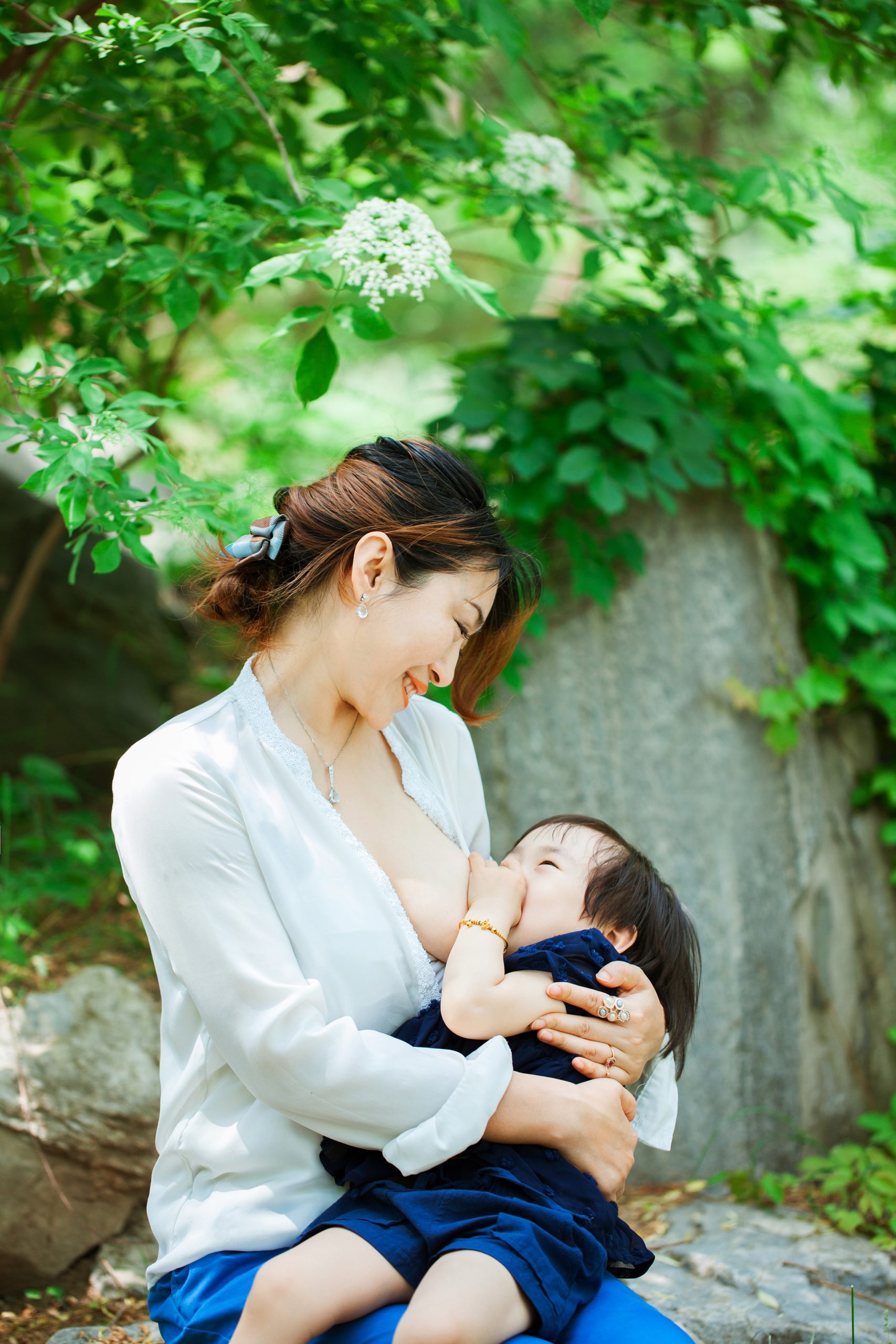
如何添加辅食? First Foods for Babies
First foods for babies
宝宝第一阶段的辅食
How to start solids:
如何添加辅食
Nurse your baby before offering other foods. Human milk remains the single most important food in your baby‘‘s diet until his first birthday. Additionally, he is more likely to show interest in new foods if he is not ravenously hungry. At this age, other foods are more for experimentation, play and fun. Remember to offer to nurse again after the solid “meal”.
给宝宝添加新的食物前先喂奶。在一周岁以前母乳仍然是宝宝饮食中最重要的食物。此外,宝宝不是饥肠辘辘的情况下,往往更容易对新食物表现出兴趣。在这个年龄阶段,辅食更多的是一种体验、游戏和乐趣。请记住吃过固体食物以后再喂一次奶。
Some babies like to sit in a high chair while others prefer to sit in somebody‘‘s lap. Babies are messy, so you may want to put an old shower curtain under his chair for easier cleanup.
有些宝宝喜欢坐餐椅,另外一些宝宝则喜欢坐在大人的腿上。宝宝吃饭容易弄得到处都是,您可以在他的餐椅下面铺一张旧浴帘以便于清洁。
Many babies prefer finger foods to spoons. First foods are for fun and experimentation. Neatness doesn‘‘t count!
很多宝宝更喜欢用手指吃东西而不喜欢用勺子。第一阶段的食物更多的是为了一种体验和乐趣。别期待一切都能保持整洁。
Never leave a baby or young child alone with food in case they begin to choke. Never give your baby small, hard foods like peanuts or popcorn. Foods that are circular in shape such as carrots or grapes should be sliced and then halved or quartered.
绝对不要让宝宝或者年龄小的孩子单独吃饭,以免他们被食物噎到。绝对不要给您的宝宝体积小而坚硬的食物,比如花生和爆米花。像胡萝卜和葡萄这类圆形食物,要把它们切成两瓣,或者四瓣。
Start with tiny amounts of food – about a quarter of a teaspoon once a day. Gradually increase the amount of food and the frequency of feeding to satisfy your baby‘‘s hunger and interest.
从少量食物开始—–—每天大概四分之一茶匙。逐渐增加食物的量和次数,以满足宝宝的胃口和兴趣。
Use only single ingredients and wait about a week between introducing each new food. Then, if something upsets your baby, you will know exactly what it was.
每次只喂一种成分,再添加新的食物需要间隔一个星期。这样,您可以准确地知道什么食物让你的宝宝感觉不对劲。
To minimize the risk of allergies, it‘‘s a good idea to wait until your baby is at least a year old before introducing citrus fruits (including oranges, lemons, and grapefruit) kiwi, strawberries, peanuts and peanut butter, eggs, soy products (including soy milk and tofu), and cow‘‘s milk (including cheeses, yogurt, and ice cream). If there is a family history of food allergy, consult your doctor or allergist for advice on when to start your baby on these more-allergenic foods; it may differ from recommendations for babies without allergic history.
为了将过敏的风险降到最低,最好等到您的宝宝一岁以后再添加柑橘类水果(包括橘子,柠檬和柚子),猕猴桃,草莓,花生和花生酱,鸡蛋,豆制品(包括豆浆和豆腐),以及牛奶(包括奶酪,酸奶和冰淇淋)。如果有家族食物过敏史,询问您的医生或者过敏专家,什么时间给您的宝宝添加上述容易引起过敏的食物最合适;您得到的建议可能不同于那些没有过敏史的宝宝。
Babies under a year should not be given honey or corn syrup as they carry the risk of botulism.
一岁以内的宝宝不能添加蜂蜜和玉米糖浆,因为它们可能造成肉毒杆菌中毒。
Good first foods for babies
适合宝宝的第一阶段食物
Save money and give your baby the freshest food by making your own baby food. Here are some suggestions.
节约开销,自己动手给宝宝做最新鲜的食物。以下是一些建议。
Fruits
水果
Most babies love fruits. Make sure they are ripe, and wash well before peeling. Here are some favorites:
大多数宝宝喜爱水果。确定它们已经成熟并清洗干净,然后削皮。下面是一些很受欢迎的水果:
Bananas cut into slices which have then been halved or quartered
香蕉切片后再切成两半,或者四瓣。
Unsweetened applesauce, or tiny apple chunks that have been softened by cooking in the microwave
不加糖的苹果泥,或者在微波炉里加热变软的苹果,切成小块。
Plums, peaches, pears, and apricots, gently cooked if necessary
西梅,桃子,梨子和杏,需要时可以适当加热
Avocado diced into small, bite size pieces
牛油果切成可以直接咬的小块
Vegetables
蔬菜
Fresh vegetables should be washed, peeled and cooked until tender. Frozen veggies are convenient to have on hand. Avoid the canned varieties to which salt has been added. Your baby may enjoy:
新鲜蔬菜需要清洗,去皮并烹饪直到变软。可以冷冻一些蔬菜备用。避免使用罐装蔬菜,因为里面添加了盐。您的宝宝可能会喜欢:
Baked or boiled sweet potatoes, in tiny chunks
烤或者煮的红薯,切成很小的块
Mashed white potatoes
土豆泥
Baby carrots, green beans, peas and squash
小胡萝卜,青豆,豌豆和瓜类
Meat and fish
肉和鱼
Babies often prefer well-cooked chicken, which is soft and easy to eat when shredded. Be careful to remove even the tiny bones when serving fish.
宝宝通常喜欢烹饪彻底的鸡肉,又软,撕碎以后更容易吃。在给宝宝鱼的时候即使是非常细小的鱼刺也要剔除。
Beans and legumes
豆子和豆类蔬菜
Remove the skins from beans as they tend to be harder to digest. If you use canned beans for convenience, make sure they are unseasoned.
去掉豆子的壳因为它们很难消化。如果您为了方便选择使用罐装豆子,请保证它们没有添加调味料。
Grains and cereals
谷物和麦片
Commercial, iron-fortified cereals are often the first foods served to babies who are not breastfeeding because they need the extra iron, but breastfed babies are rarely anemic as the iron in human milk is well-utilized. If there is concern about the baby‘‘s iron levels, a simple test can be done in the doctor‘‘s office.
市面上,添加铁的麦片经常用做非母乳宝宝的第一阶段食物,因为他们需要额外的铁,而母乳宝宝由于母乳里面的铁可以被很好地利用而很少发生贫血。如果担心宝宝的含铁量,可以请医生做一个很简单的测试。
Whole grain cereals, breads and crackers are the most nutritious. Wait until later in the year before offering wheat products. If you use cereals, make sure that they only have one ingredient and use either water or your own milk for mixing. Many mothers prefer to let their older babies chew on a hard bagel or an end of bread instead of sugary teething biscuits.
全谷物麦片,面包和饼干是最有营养的。等到快一岁的时候再添加小麦制品。如果您使用麦片,请确保它们是单配方的,并使用水或者您的奶来调和。有些妈妈喜欢让大一点的宝宝咬硬贝谷圈,或者面包边而不是含糖的磨牙饼干。
References
参考
The American Academy of Pediatrics:
美国儿科学会
http://aappolicy.aappublications.org/cgi/content/full/pediatrics;115/2/496
“Pediatricians and parents should be aware that exclusive breastfeeding is sufficient to support optimal growth and development for approximately the first 6 months of life and provides continuing protection against diarrhea and respiratory tract infection. Breastfeeding should be continued for at least the first year of life and beyond for as long as mutually desired by mother and child.
“儿科医生以及父母们应该了解,纯母乳喂养能够满足婴儿头6个月的最佳生长和发育 ,并且在此之后继续预防腹泻和呼吸道感染。母乳喂养应该至少持续到1岁以后,并根据妈妈和孩子的共同需求持续下去。
Complementary foods rich in iron should be introduced gradually beginning around 6 months of age. Preterm and low birth weight infants and infants with hematologic disorders or infants who had inadequate iron stores at birth generally require iron supplementation before 6 months of age. Iron may be administered while continuing exclusive breastfeeding.
在6个月左右应该逐步添加富含铁的食物。早产儿,低体重婴儿和有血液疾病的婴儿,以及出生时铁含量不足的婴儿通常需要在6个月之前补充铁。铁可以在纯母乳喂养时补充。
Unique needs or feeding behaviors of individual infants may indicate a need for introduction of complementary foods as early as 4 months of age, whereas other infants may not be ready to accept other foods until approximately 8 months of age.
有特殊需求或者进食习惯的个别宝宝也许会要求在4个月的时候就开始添加辅食,其他婴儿可能直到8个月才准备好接受辅食。
Introduction of complementary feedings before 6 months of age generally does not increase total caloric intake or rate of growth and only substitutes foods that lack the protective components of human milk.
给不足6个月的婴儿进食固体食品,并不能够提高卡路里的摄入,也不能够提高生长速度,反而仅仅是用缺乏人乳所含保护性营养的食品来替代母乳
During the first 6 months of age, even in hot climates, water and juice are unnecessary for breastfed infants and may introduce contaminants or allergens.
在最初的6个月,即使在天气很热的气候下,母乳宝宝也不需要添加水和果汁,并且水和果汁还可能引起污染和过敏。
Increased duration of breastfeeding confers significant health and developmental benefits for the child and the mother, especially in delaying return of fertility (thereby promoting optimal intervals between births).
母乳喂养时间的延长明显利于母亲和孩子的健康及发育,特别是延缓了下一次生育(因此促进最佳的生育间隔)。
There is no upper limit to the duration of breastfeeding and no evidence of psychologic or developmental harm from breastfeeding into the third year of life or longer.
母乳喂养没有上限,并且没有证据表明母乳喂养到三岁或三岁以上会产生心理或者发育上的危害。
Infants weaned before 12 months of age should not receive cow‘‘s milk but should receive iron-fortified infant formula.”
在12个月之前断奶的婴儿不应该摄入牛奶,而应该摄取添加铁的婴儿配方奶。
